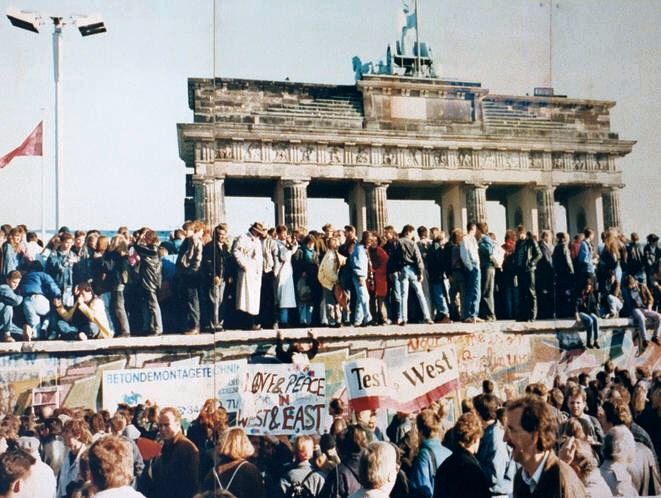This week, people around the world recalled conflicts of the past and resolutions for peace. They held ceremonies for the anniversary of the fall of the Berlin Wall and Remembrance Sunday on November 9, and for Armistice Day and Veterans Day on November 11. On Sunday, Berlin released 8,000 balloons along an eight-mile stretch where die Mauer previously stood. That same day, the Queen visited the memorial at the Cenotaph, and crowds gathered at the Tower of London to view the 888,246 ceramic poppies “bleeding” forth from the tower—representative of the British and Commonwealth servicemen who died in World War I. Two days later, the French commemorated Armistice Day with a ceremony at the Tomb of the Unknown Soldier in Paris, as well as honoring 579,606 veterans of all nationalities at the new Ring of Remembrance memorial at the Notre Dame de Lorette national necropolis. Meanwhile, tens of thousands of Americans flocked to the Concert for Valor on the National Mall in honor of Veterans Day. Afghanistan, Australia, Belgium, Canada, and many other nations held similar ceremonies.
Such commemorations mark historical conflict, and as such they themselves can become points of contemporary controversy. Activists in Germany removed white crosses intended to honor victims of the Berlin Wall and relocated them to the EU/Africa border, suggesting the existence of “new Walls.” Remembrance Sunday also became a target; in London, four men were arrested for a suspected plot to assassinate the Queen during her participation in Remembrance ceremonies.

The fall of the Berlin Wall, 1989. Photographer unknown. Reproduction from public documentation/memorial by user Lear 21 on Wikipedia. Photo of the Brandenburg Gate photo documentation wall.
While honoring veterans, it is also valuable to reflect on the history of these days. How did they come to be? What exactly do they commemorate, and what else happened on these dates? Part of these days’ fraught character comes from the layered nature of history. A well-known shared anniversary is that of November 9, being both the date of the fall of the Berlin Wall (1989) and the 1938 Nazi pogram, Krystallnacht. Mary Elise Sarotte, author of The Collapse: The Accidental Opening of the Wall, noted in a Sunday lecture that this circumstance tempers Germans’ celebrations on this day; and in his recent article for Perspectives on History, Keith R. Allen discusses how Germans have navigated the “overlapping narratives of Nazi and Communist repression.”
Armistice Day, Remembrance Day, and Veterans Day have similarly complex histories—three holidays emerging out of one day of commemoration. The holiday was originally Armistice Day, held on November 11, with a moment of silence at 11:00 a.m. to commemorate cessation of hostilities in World War I—“the eleventh hour of the eleventh day of the eleventh month.” In England, Armistice Day was originally a day to mourn fallen soldiers. The holiday became a time of protest in the 1920s, when living ex-servicemen suffered unemployment and other economic difficulties. In the 1980s, the day’s significance was expanded to honor all who had fought in the nation’s wars.

Allentown Armistice Day Parade. Mahlon H. Hellerich and Pennsylvania Lehigh County Historical Society.
The day’s purpose has also been adapted in the United States; World War II prompted Americans to change the name of the holiday from “Armistice Day” to “Veterans Day” in order to honor veterans of all wars. The day was celebrated this Tuesday with traditional observances, such as the service at the Tomb of the Unknown Soldier in Arlington National Cemetery, as well as newer cultural homages such as the Concert for Valor. Conversations around commemoration are ongoing; for an in-depth discussion of the recently launched website honoring Vietnam War veterans, see Emily Swafford’s forthcoming article, “Controversy Surrounds Department of Defense Commemorative Website,” in the December issue of Perspectives on History.
These days of commemoration have developed over time and taken on additional meaning as new conflicts have emerged and as new histories have unfolded. It is important to honor our veterans, but it is equally important to understand that the history of their sacrifice is not one dimensional. Nations around the globe take this time to remember their servicemen and -women throughout military history. This history is long and complex, and the better we understand it, the better we can appreciate the debt we owe to those who have fought and continue the fight for peace.
This post first appeared on AHA Today.
Tags: AHA Today What We're Reading
Comment
Please read our commenting and letters policy before submitting.






